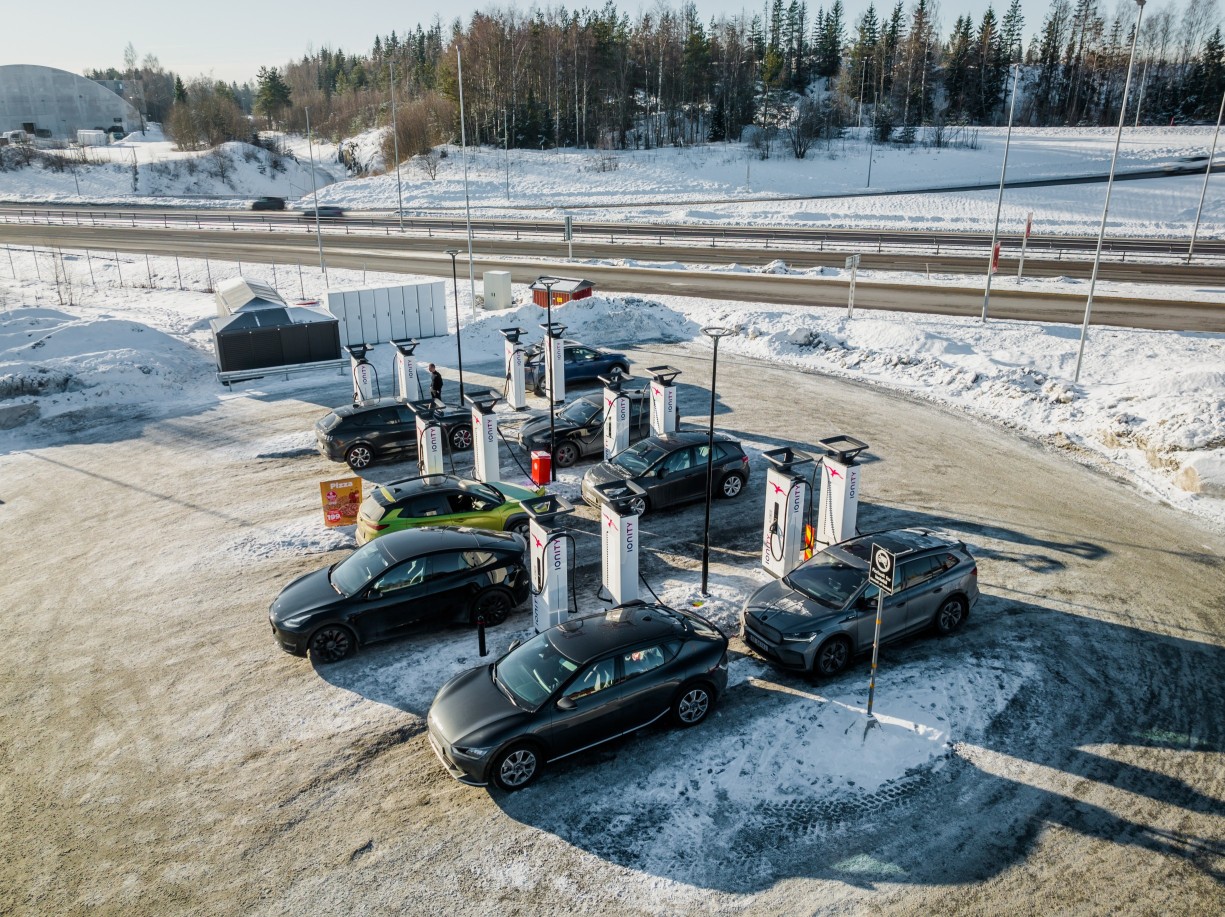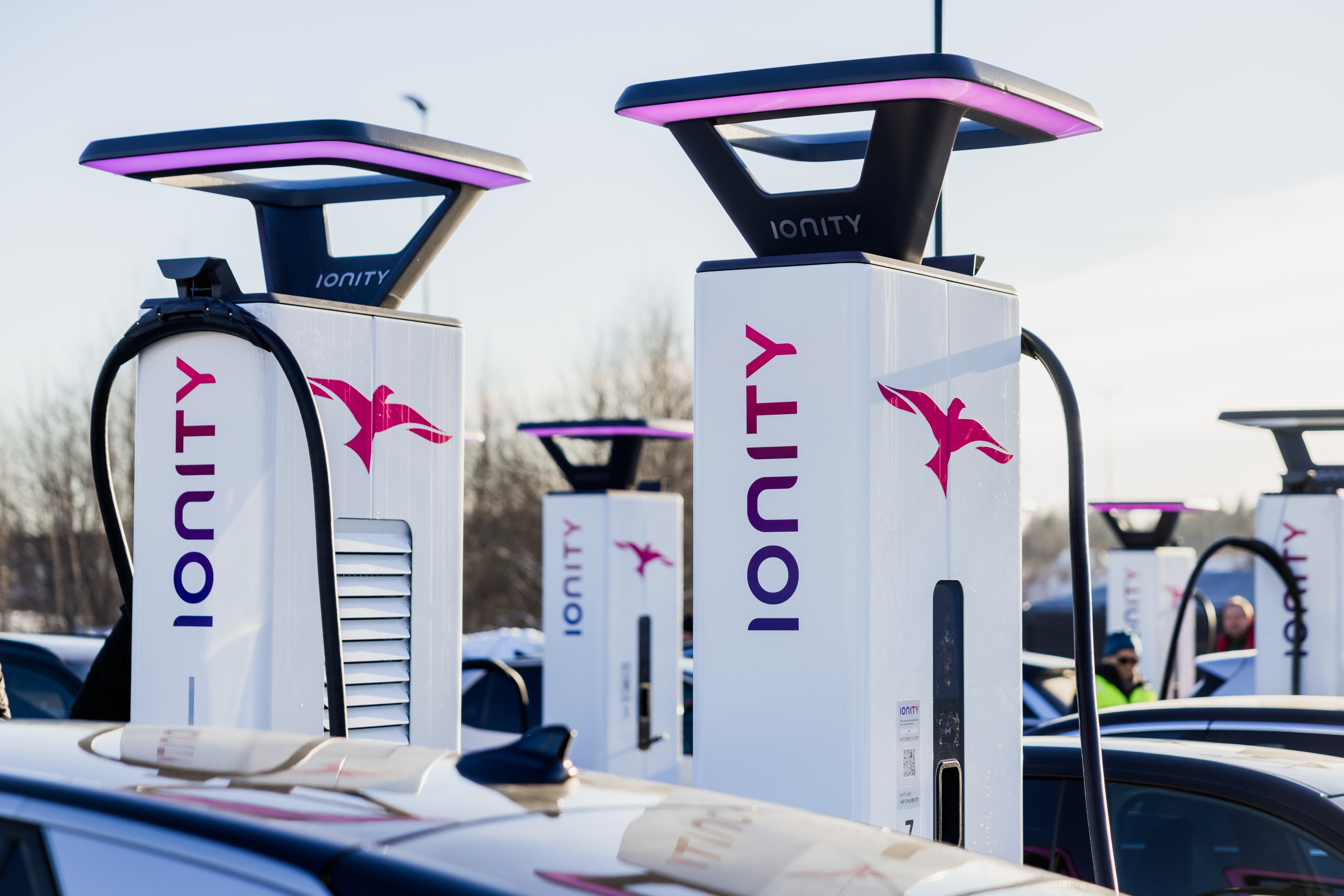
Too often the conversation around electric vehicles is hijacked by the usual suspects – the need for more charging stations or that electric charging takes longer than conventionally fuelled vehicles. The truth is: EV charging isn't easier or more complicated than refuelling a petrol or diesel vehicle. It's just different. In addition, it's more adaptable to your driving habits — no matter where or when.
Make any stop a pitstop
For over a century, petrol stations have been fundamental to all kinds of drivers. Sure, it's simple, it's quick, but it's still something that requires your undivided attention while you're at it. Unlike electric vehicles, they don't refuel themselves while sitting in the garage or while you're off shopping at the supermarket.
With an electric vehicle, your options are manifold. Each one has its own advantage and with the right charging mix, driving an electric car will become easier and more effortless than conventionally fuelled vehicles. And as we explain later, IONITY is an integral part of that mix.
EV owners charge their vehicles in two ways: private charging that happens at home with a charger in your garage via a wall box or parking spot when the car is not in use. The second is the public charging spots which allow you to top-up your EV on the go. While private charging offers unmatched convenience and usually also lower costs, public charging is indispensable to provide a secondary charging infrastructure when you're running errands in town or during long-distance travel. It's the latter for which IONITY represents an essential part of the charging ecosystem.
To sum it in a nutshell, there is one chief difference between the way you refuel a petrol or diesel vehicle and the way you top up your EV. The driver of an internal combustion vehicle heads to a petrol station and usually fills up the tank in one go. With an EV, the approach is more varied: to fully charge at home or at work, and then use whatever opportunity to recharge conveniently on the go, utilising the vehicle's downtime. Let's explore these further.
Home is where the charger is
Most EV drivers charge more commonly at home than away. If you have your own parking space with suitable electric charging available, and you don't regularly drive more than your vehicle's range in a day, it's easy and cheap. Just come home, plug in your vehicle and charge. If you can take advantage of favourable off-peak electricity prices or if you have your own sustainable power source, like solar panels, driving will be about as cheap and convenient as it gets.
Setting up a wall box at home is easy. The most obvious solution is to order the hardware along with an installation service from your vehicle manufacturer, typically with the purchase of the first EV, or from a third-party manufacturer. These solutions are low-powered systems, their longer charging time evened out by the fact that charging happens during the vehicle's downtime. The same principle applies for charging electric vehicles at the workplace.
No matter where you charge, low kilowatt charge points are ideal for typical day-to-day driving on short and medium distances, where drivers aren't concerned with exceeding the vehicle's range.
Go anywhere, charge everywhere
There's a whole world out there between home and office. Supermarkets, shopping malls, restaurants, hotels, gym and the urban streets are all ideal opportunities for EV drivers to run their errands while topping-up their batteries. This ability to charge on the go in public spaces is even more critical to those without access to their private charge point. This freedom of movement is paramount to ease the concerns of EV first timers.
High power on the highway
Getaways need highways. And here, it's no longer possible to use the vehicle's downtime for charging as you usually want to reach your destination as swiftly as possible. Old fashioned low-powered charging stations are a turn-off as they force drivers to stay longer off the road longer than they'd like to.
This is where high-powered IONITY stations represent the final piece of the puzzle to make EVs fully competitive with combustion engine vehicles. With charging stations strategically placed along Europe's highways, crossing the continent with an EV is just as easy as it's with a petrol or diesel vehicle. A charging capacity of up to 350 kW makes it possible to top-up to 80% in less than half an hour, or, in some cases, just 15 minutes, depending on the battery of the vehicle (while IONITY offers 350 kW, the maximum charging power that the vehicle can use is determined by the vehicle itself).
As the charging speed drops off noticeably after the battery reaches 80% due to the technical properties of the lithium-ion batteries, charging from a nearly empty battery to 80% is the most efficient way to travel long-distance. While the car recharges its batteries, the drivers can recharge their own by grabbing a refreshment or taking a bathroom break. With charging stations strategically placed along Europe's highways, IONITY stations represent the final piece of the puzzle.
A charging experience that puts you in charge
No two people are alike and nor are their charging habits. The good news: Thanks to a multitude of charging options available at home, in the city and on the highway, choosing the right charging mix can make driving an EV more convenient than its fuel-powered cousins. And given the ever-increasing range of new and upcoming EVs (some with over 700km of range), there will be even fewer recharging pit-stops required.
At the same time, those stops will be even shorter, as new electric vehicles will be able to handle higher charging speeds. Another benefit: While the car charging, you're free to use that time productively. Add to it the diverse public and private infrastructure using simple systems like Plug & Charge. Altogether, it's easy to see why the EV charging experience is pleasurable for everyone. Enjoy your drive!
Read more

Plan your winter EV travels with ease by following simple tips for charging efficiency and convenience. From updating your EV software to preheating your car and optimizing charging stops, IONITY ensures smooth and reliable journeys even in cold conditions.

This article explains how cold weather affects EV range and offers practical tips to optimize performance during winter. It covers strategies like preheating your car, maintaining tyre pressure, and planning extra charging stops for seamless winter travel.

